

Andrew Maclean
2025 Mahindra XUV 3X0 vs Chery Tiggo 4: Spec battle
1 Month Ago
This is a serious four-wheel drive that just happens to be a pretty terrific family car. All for about as much as a 300 Series too!
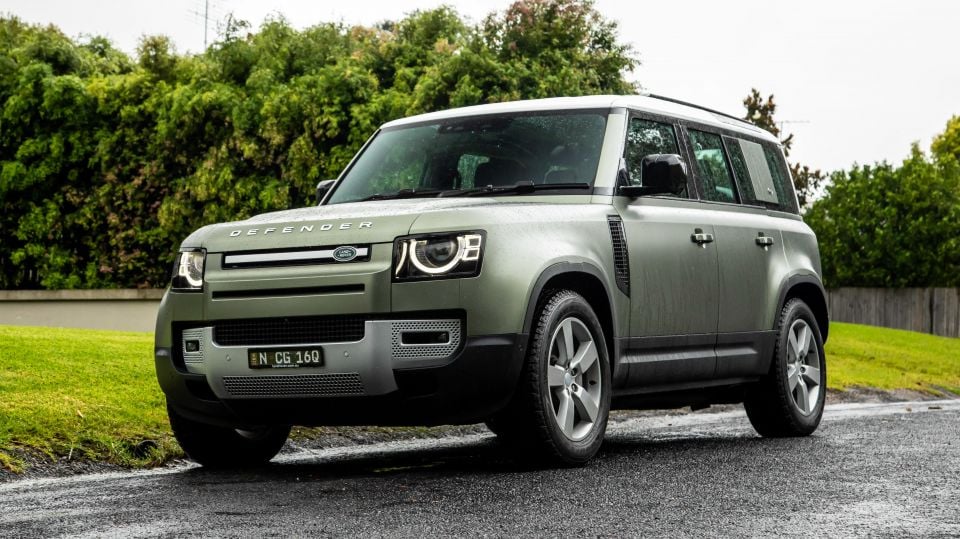
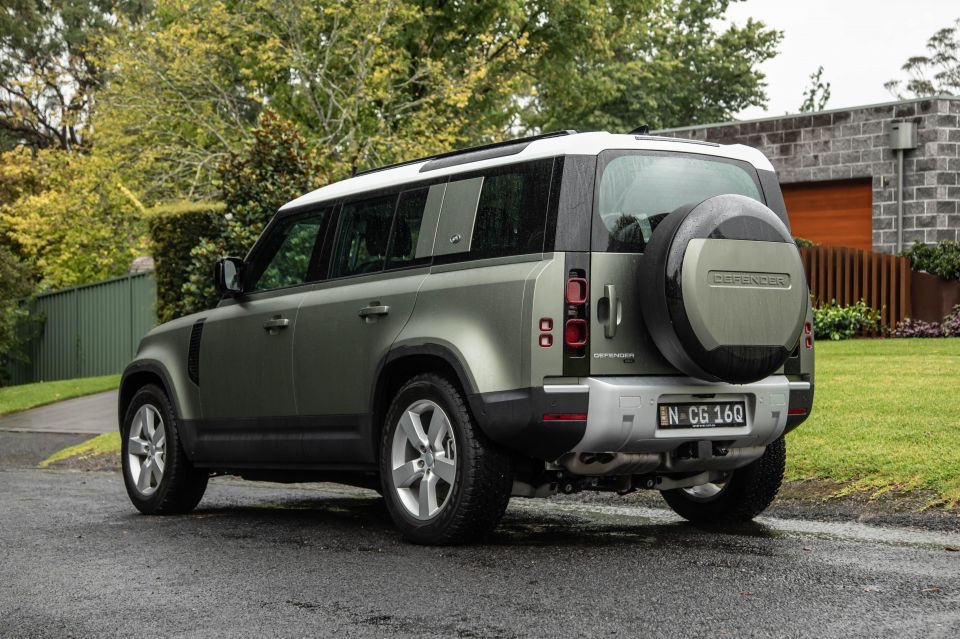

Quickly see how this car stacks up against its competition. Select any benchmark to see more details.
Where expert car reviews meet expert car buying – CarExpert gives you trusted advice, personalised service and real savings on your next new car.
The latest Land Rover Defender has been around for a little while now.

In the context of the still-crazy Australian four-wheel-drive market, the Defender may well have come to mind as an alternative to some other models with super long wait lists.
That isn’t to say that the Defender has a short wait time, or that stock is easy to come by. But you mightn’t get told “it’ll be 2024 or never” if you try and order one. JLR is too interested in your money to say something like that.
So, with that in mind, we thought it best to get reacquainted with what is, potentially, the sweet spot in the Defender range – a 110 long-wheelbase variant, with a diesel engine and in not a silly level of spec.
Here we have the 2023 Land Rover Defender 110 D300 SE.
It’s still not cheap – like most things, the prices are up – and this particular car had a few options boxes ticked, but let me tell you, it’d be hard not to want one of these if you drove it back to back with a Toyota LandCruiser 300 or Nissan Patrol.
You’re looking at a starting price of $104,000 before on-road costs and options, according to Land Rover – that’s a slightly different number to what we’ve reported previously, but prices are always shifting.
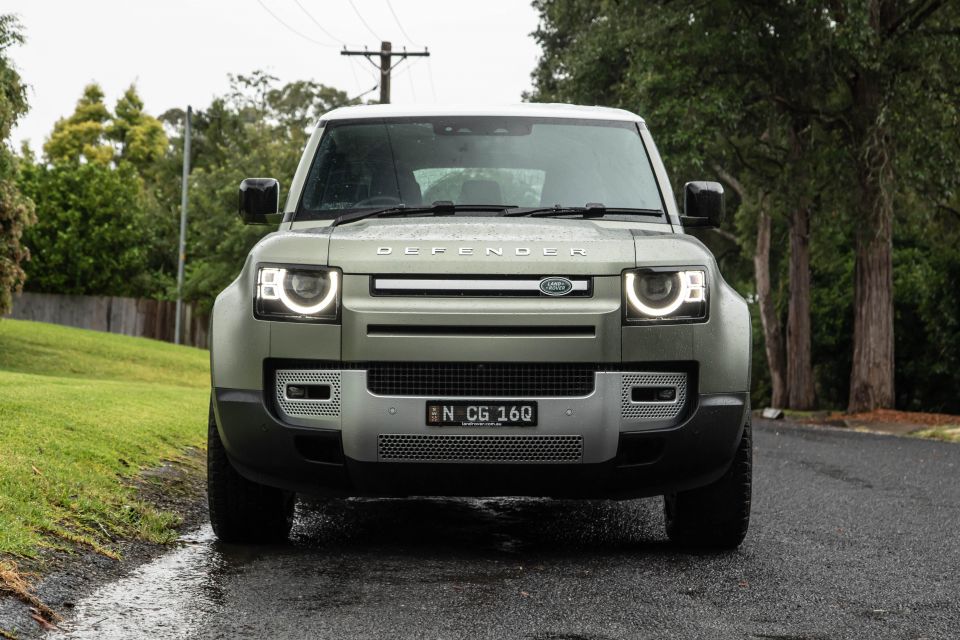
The car I drove was loaded with more than twenty grand of options, though, so take the list price with a grain of salt.
Here’s a rundown of the added-cost items fitted:
That totals up to an as-tested price of $125,013 plus on-road costs – it’s not going to be for all budgets.
But hey, if you go off the list price without options, this Defender is still cheaper than a LandCruiser 300 GXL ($104,481) and not miles off a top-spec Patrol Ti-L ($95,115).
The Defender has a terrifically utilitarian cabin.
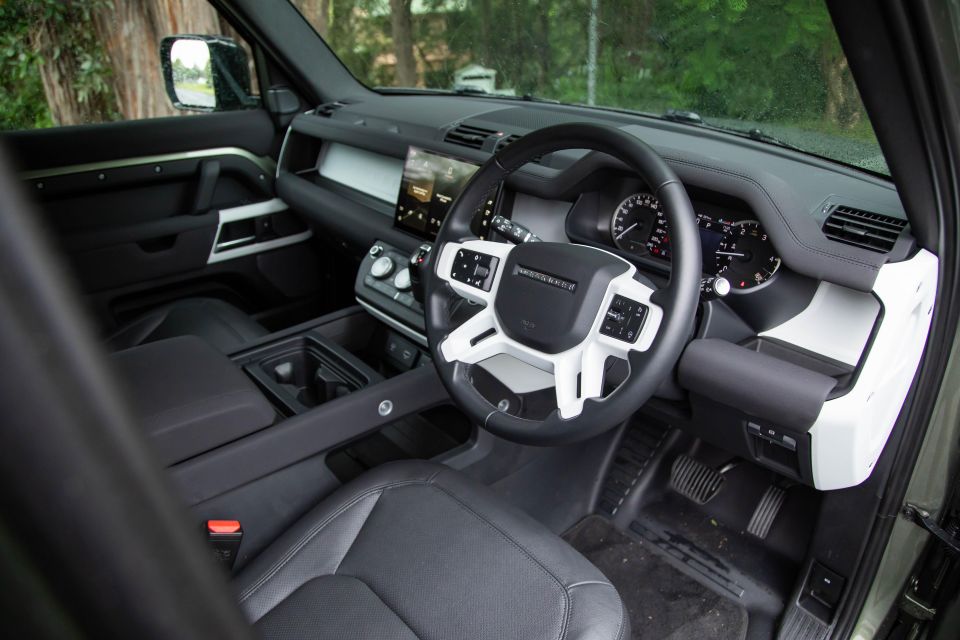
There is ample storage throughout the interior, including an impressive shelf in front of the front passenger and storage sections in front of the driver, plus there are massive door bins as well – but sadly there are no bottle holders moulded into the door pockets.
There’s also a huge centre console bin area with tiered storage options for larger items, a cupholder section above that with a wireless phone charger, and then a sealed centre console bin under the centre armrest.
The controls are all exceptionally easy to get to grips with, literally and figuratively. With twin rotary dials for air conditioning and fan control (one and the same, and you have to hit a button to make it a fan controller, which can be distracting), and a number of different buttons available for other controls in the car.
There is a volume knob, and also the big touchscreen media system has a number of different menu options on it.
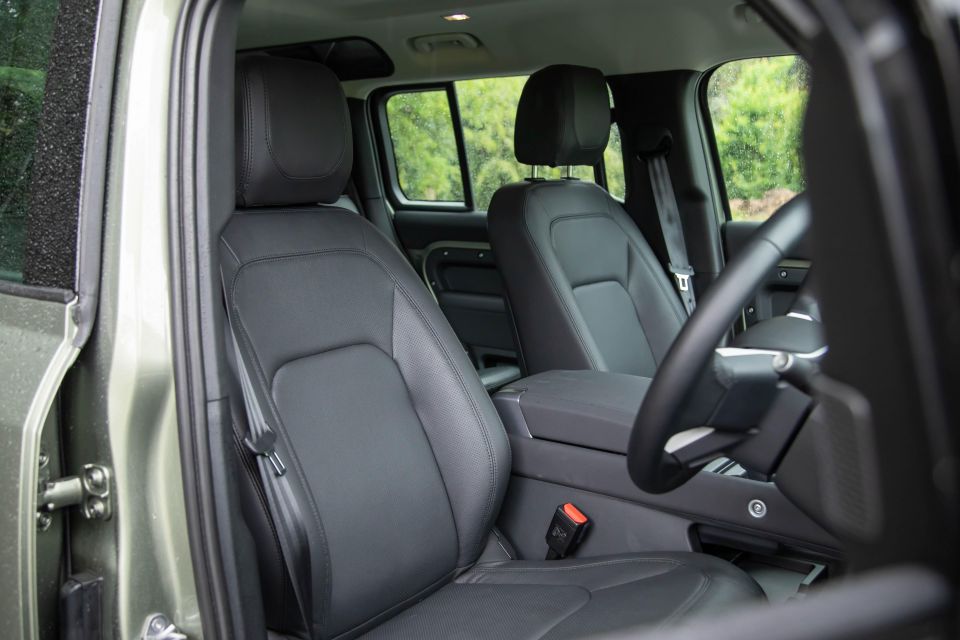
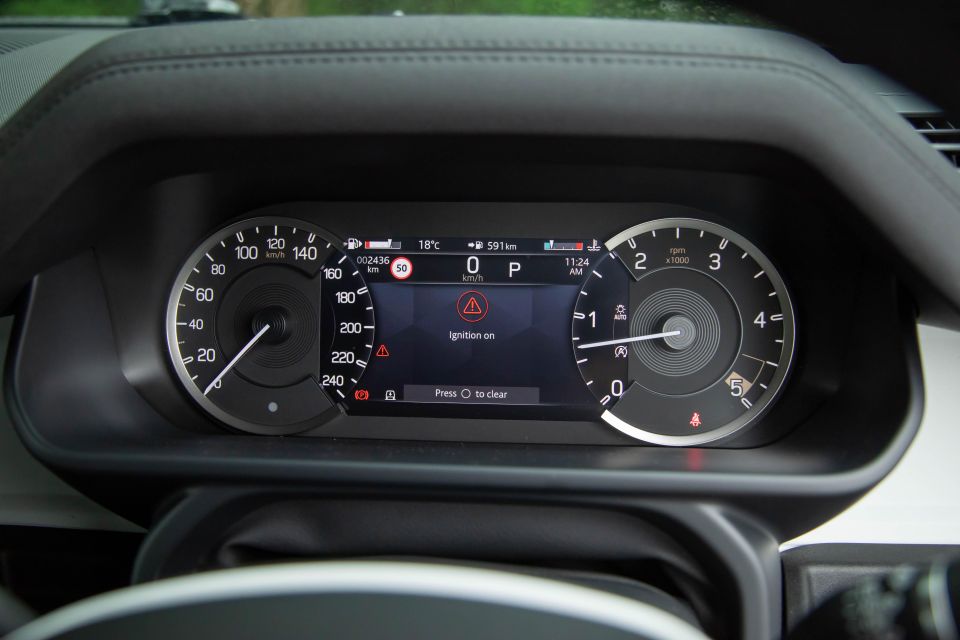
The media controls are very easy to come to terms with, and the display is crisp and very fast to react to touch inputs.
I really appreciated the amount of information available to the driver – including things like whether the centre or rear differential is locked, how much load is on each airbag shock absorber, and other stuff like the measurements of the car and also the angle on which the car is parked.
And then there is the usual stuff that you would expect like wireless smartphone mirroring technology (Apple CarPlay and Android Auto), and it seemed to work pretty well during my time with the car. The stereo is very good as well.
Seat comfort and adjustability is very good, and while the steering wheel is quite large, the white plastic theme (running on the doors, dash and wheel) looked great.
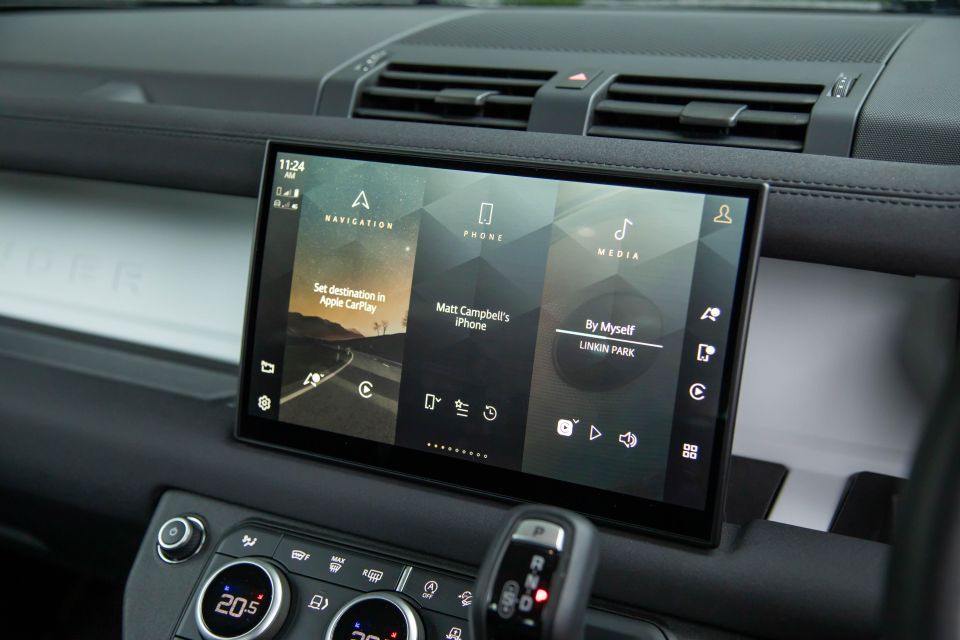
The part-digital instrument cluster is also pretty easy to get to grips with, although it is kind of strange that part of the dials are digital and the rest isn’t.
One of the things about the Defender that is ultra impressive is the number of charging points. There is a 12-volt, a USB-A, and 2x USB-C ports on the dashboard. Plus, there’s a wireless phone charger.
Then there are more for those sitting behind, too, including 2x USB-C in the second row, and three 12-volt outlets and a household-style powerpoint. And in this version, there was also an air compressor in the boot!
For those who live in challenging climates, there is quad-zone climate control in this spec – two zones front and rear – and the rear has a fan controller as well. There are air-vents, as well as mesh pockets on the backs of the seats.
Space in the second row for someone my size (182cm / 6’0”) behind my own driving position is okay when the seat is slid back a little bit, but it’s tight if the seat is slid all the way forward.
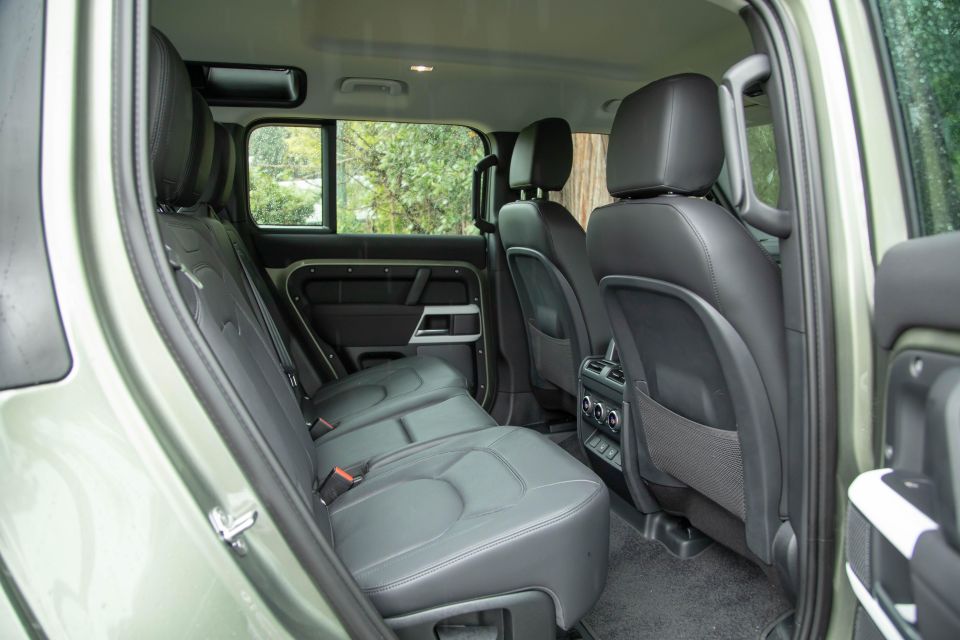
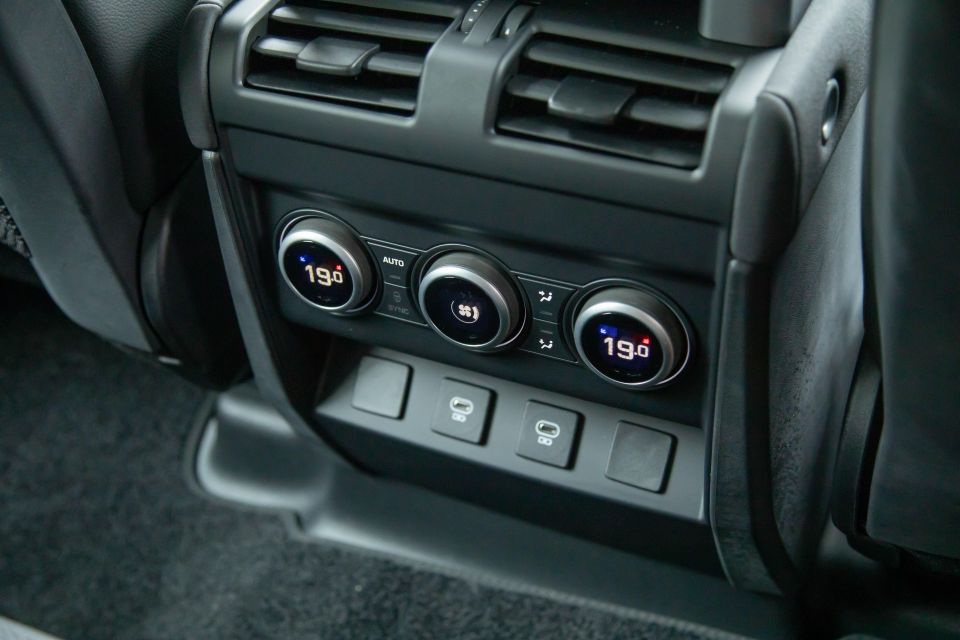
In a happy middle position I had enough knee- and toe-room, while headroom was good, and so was the vision out from the back.
There are three top-tether and two ISOFIX points for child seats. My 20-month-old seemed to really like the back seat of the Defender, because she could see so much out the windows. And the windows above the back seats in the ceiling were a treat, too.
The second row scores storage bins in the doors, a pair of cupholders in a flip-down armrest. The second-row seat is a partial 40:20:40 backrest, with a 60:40 seat base, with the smaller portion on the drivers side for access to the third row.
The seat fold mechanism is a simple one. There’s a lever on top of the outer side of the top of the rear seats, which you simply pull and then slide the seat forward. It isn’t a very light seat, though.
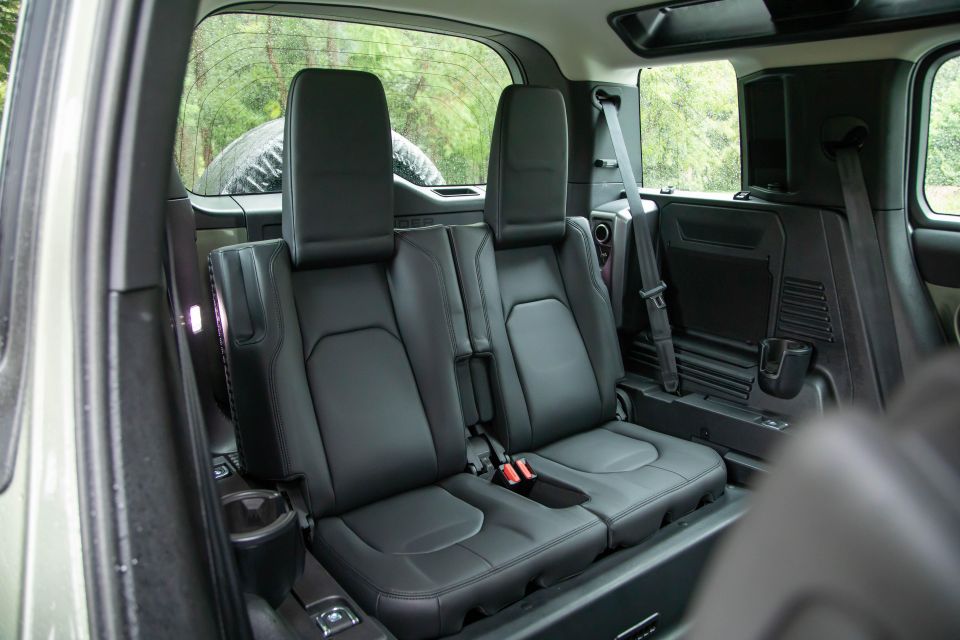
The third row is better considered as ‘sometimes’ space. It’s not a proper three row vehicle – but there is the bigger Defender 130 to fill that void. There are no child seat anchor points in the third row seats either, and the back row seats are quite heavy to operate – they feel really tight – maybe that will improve over time.
There are some pretty good storage options back in the third row, including cupholders and little net pockets over the wheel arches.
As for boot space, Land Rover says the seven-seat 110 models have 916 litres of cargo capacity to the headlining with the car in five-seat configuration. Fold down those seats and the space is 2233L, the brand says.
If you need to use all seven seats, there’s a claimed 231 litres of boot space on offer – but really, it’s pretty tiny in that configuration, so don’t expect to fit much more than a couple of shopping bags or maybe a tent lying horizontally and a little bit of other camping gear.
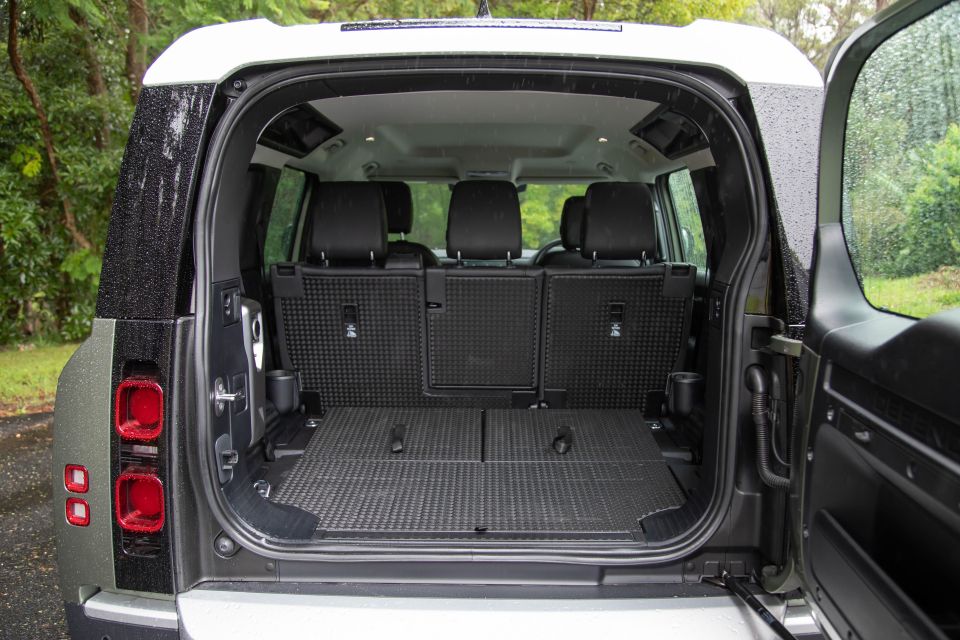
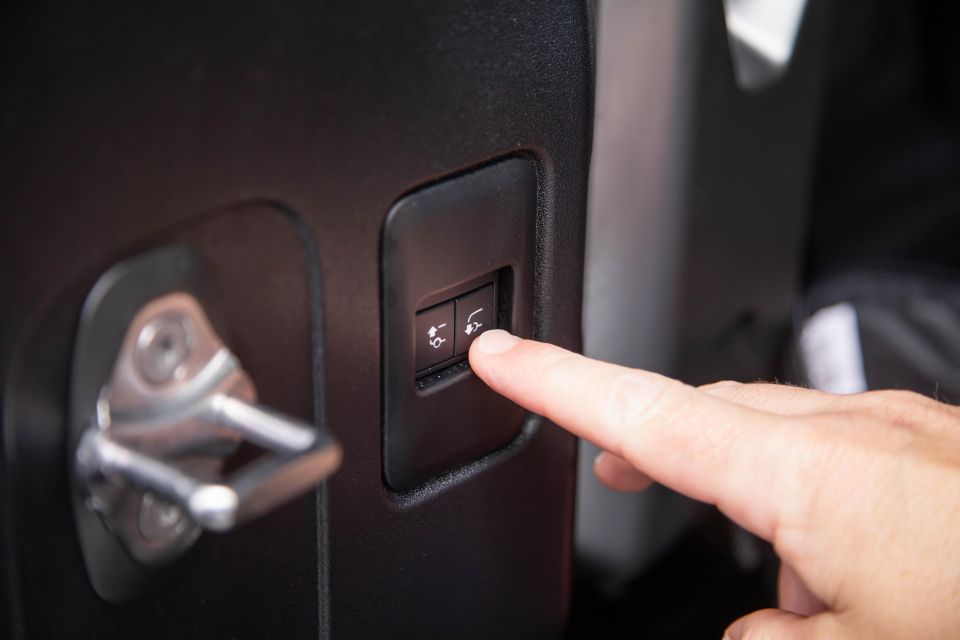
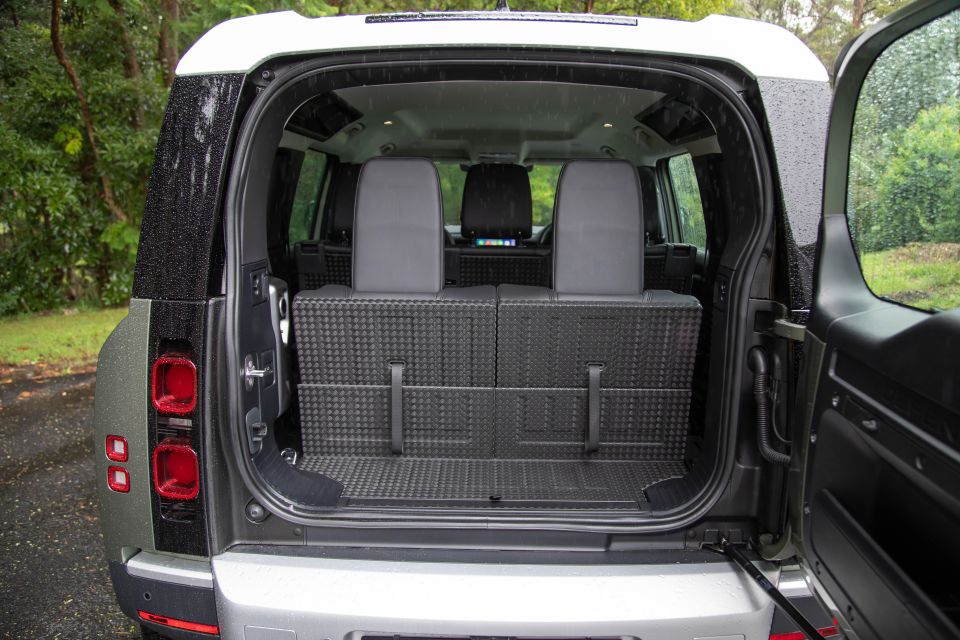
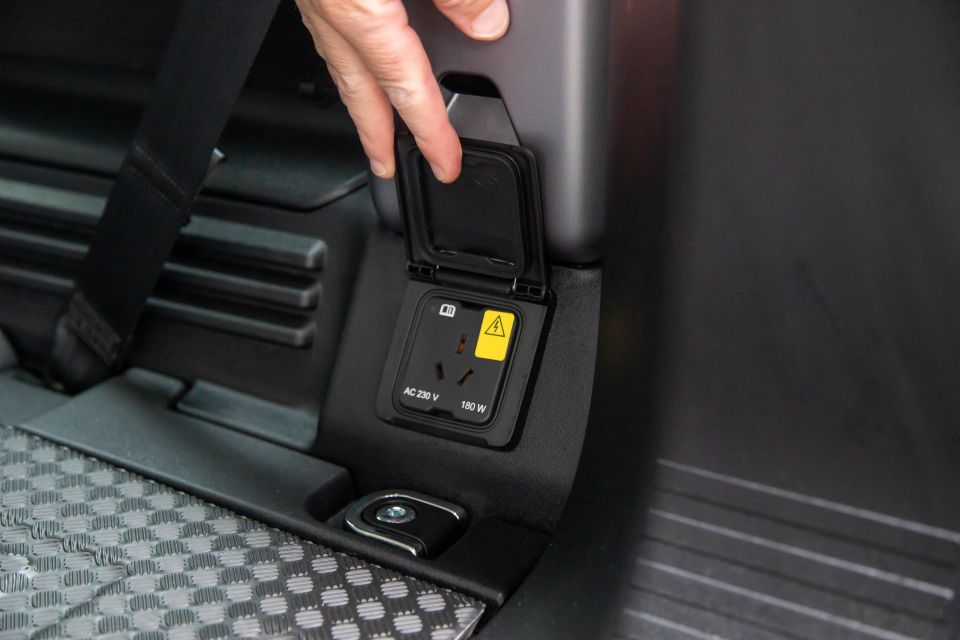
There is a removable cargo cover which is very flexible. And if you’re loading in heavy items, you can adjust the air suspension to lower or raise the rear of the car.
However, that side-swinging tailgate is heavy to operate, and can swing back towards you if you are parked on an angle that doesn’t suit it.
It’s one of the most annoying things about the design of this car, because the strut setup seemingly struggles to hold the heavy door at even the slightest of leans. And, copping a whack in the back from a closing tailgate (with the weighty spare wheel fitted) isn’t something you want to experience.
The Defender D300 runs a 3.0-litre twin-turbo inline six-cylinder diesel engine with mild-hybrid tech.
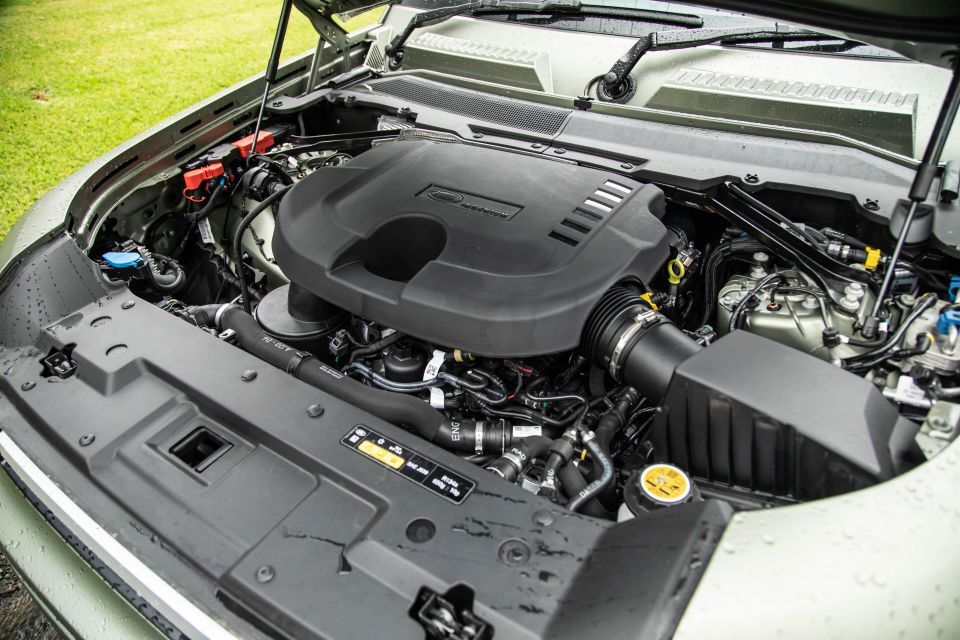
It has a healthy 220kW of power (4000rpm) and 650Nm of torque (1500-2500rpm), and a claimed 0-100km/h time of just 7.0 seconds. Impressive for a vehicle that tips the scales at 2441kg.
It has an eight-speed automatic gearbox, and all-wheel drive with a low-range transfer case.
Towing capacity is 750kg for an unbraked trailer and 3500kg for a braked trailer. The gross combined mass (GCM) is 6780kg for a seven-seat model.
What a lovely thing to drive.
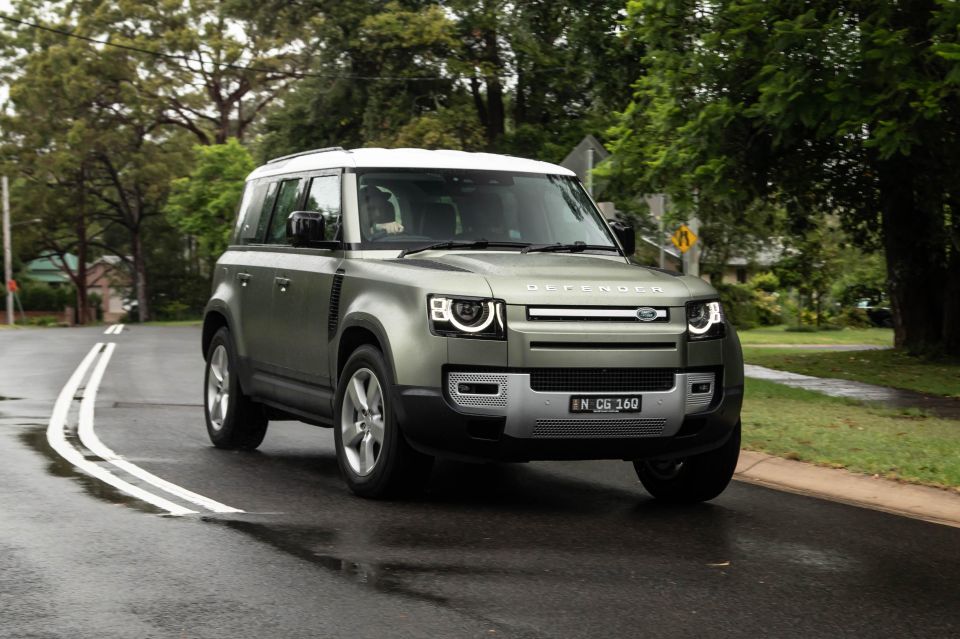
This is a big off-roadable SUV, and yet it manages to be extremely comfortable, composed, and sophisticated on the road.
Even with these big wheels and Goodyear Wrangler all-terrain tyres (255/60 R20), it has a stable, planted and very solid feeling on the road.
The steering is also terrific – it’s nicely weighted, and very user-friendly for open road or low-speed driving. The turning circle isn’t tiny, but the light steering action helps make parking a bit easier.
Its suspension does a fantastic job of keeping occupants comfortable, and the ride quality is very good. You will notice big, jarring edges, but it recovers very quickly.
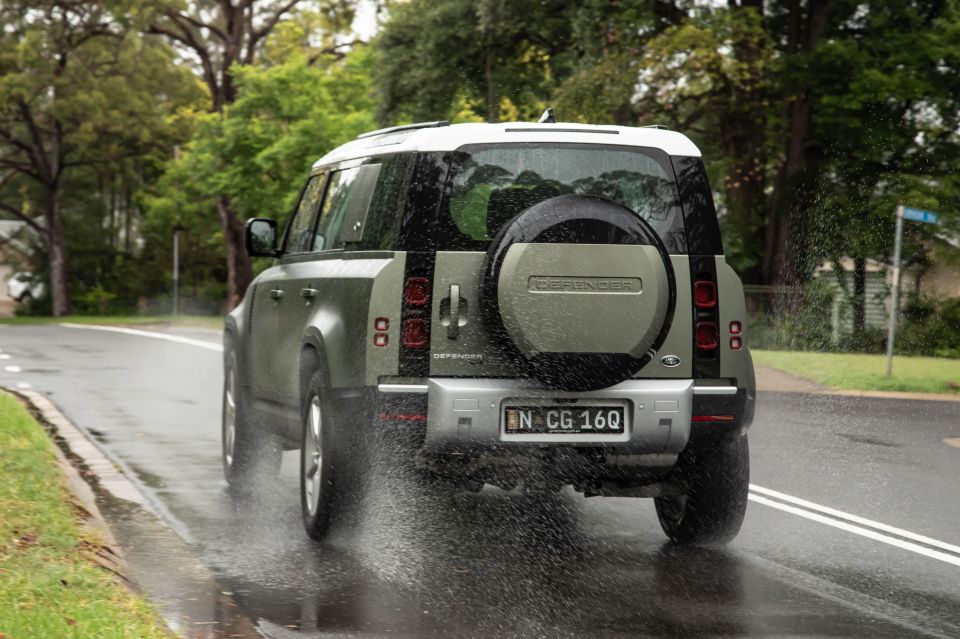
It also corners well for a large vehicle that’s this heavy, and no doubt the permanent four-wheel-drive system has a part to play in that.
That is suspension is height adjustable as well, so you can set it to a low setting, if you are encountering a low ceiling in a car park, or you just aren’t the tallest person and want a bit of help getting in.
My mum is tiny and she struggled to get into the backseat even with the grab handles on the D-pillars. There are no sidesteps – maybe that’s the reason it’s so hard to get in and out of for shorties.
This inline six diesel engine Is a corker. It has immense pulling power from low in the rev range, once it gets past a little bit of turbo lag from a standstill. And it is keen to rev as well.
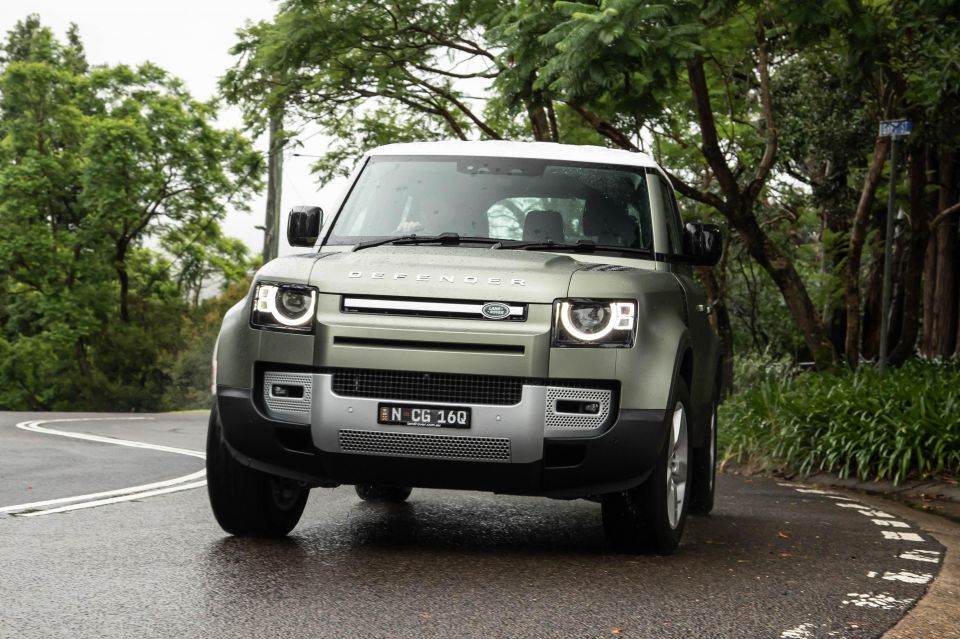
During my week with the Defender, I didn’t have a single instance of thinking “the gearbox should be doing something different” – it’s a very impressive drivetrain.
There’s not much that isn’t impressive about the Defender’s drive experience – and when you consider what it is capable of off-road, it just makes it all the more impressive.
If you do venture off the beaten track – I didn’t for this test, but you can see Paul’s video of the Defender 110 being put through its paces up top – there are multiple drive modes available including Eco, Comfort, Grass Gravel & Snow, Mud Ruts, Sand, Rock Crawl and Wading.
There’s also a low-range transfer case for serious off-roading and an immense array of off-road digital tools to help you find your way in the rough stuff – including multiple camera modes, and a see-through bonnet camera mode which will allow you to see where your tyres are basically going to go.
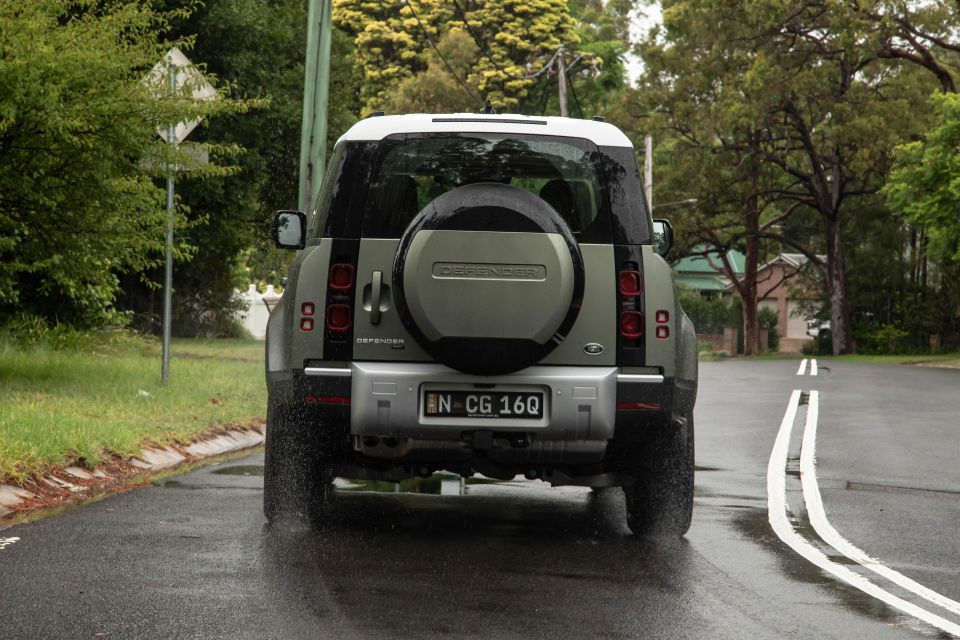
Where expert car reviews meet expert car buying – CarExpert gives you trusted advice, personalised service and real savings on your next new car.
Beyond that there’s also a trailer mode that allows you to set up a favourite caravan, horse float or box trailer, so it will adjust the safety systems to keep in mind the dimensions and weight of that trailer.
All of this technology is extremely helpful, though it can be intimidating because there is so much of it. No matter what, though, this is a terrific car to drive, and extremely impressive in multiple different ways.
There’s a decent array of tech and equipment fitted to the Defender 110, including the choice of coil springs or air suspension at no cost. Customers who plan to tow may choose coil springs, for instance.
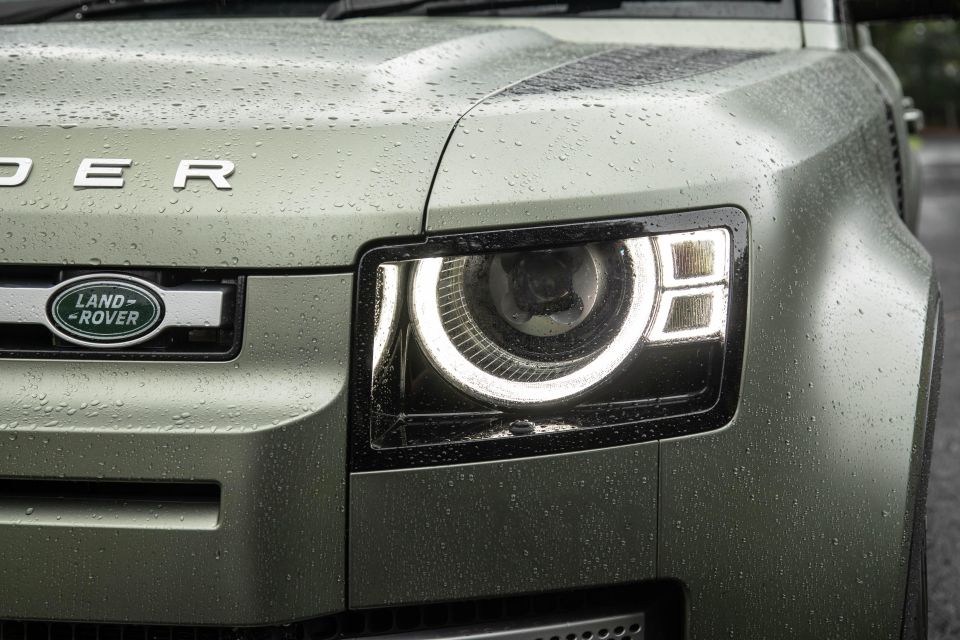

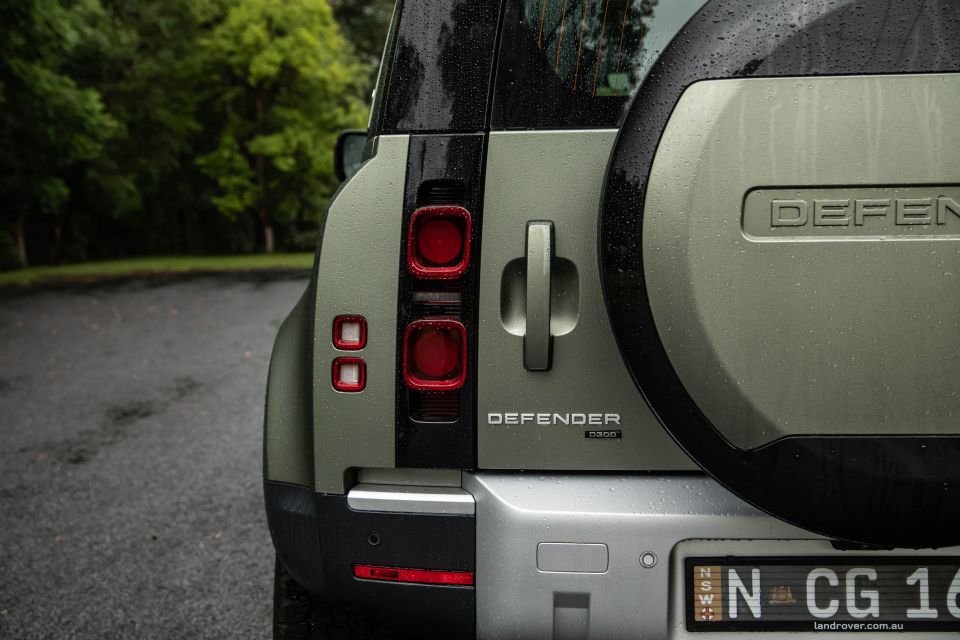
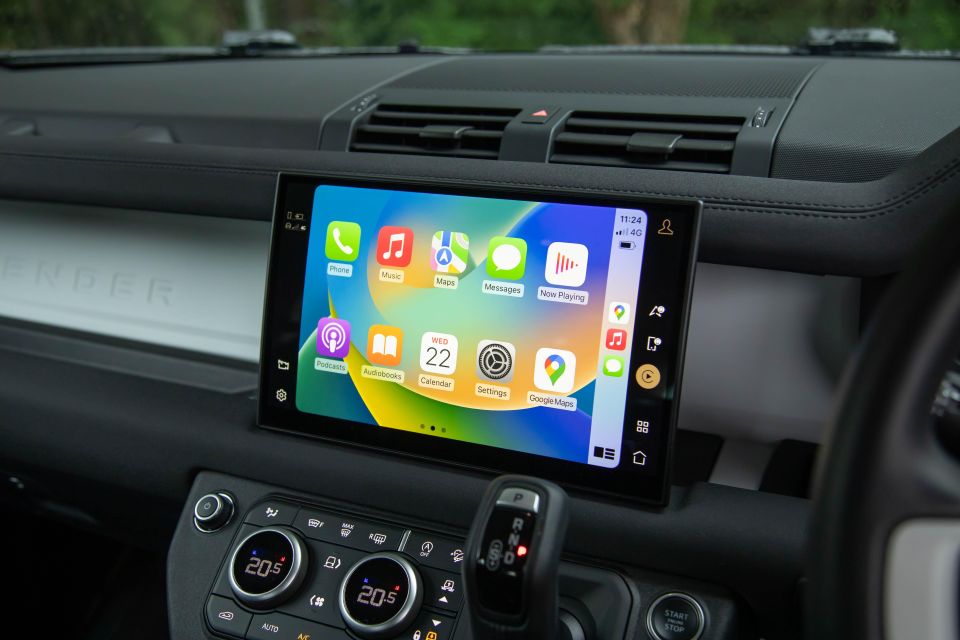
Defender highlights:
Defender S adds:
Defender SE adds:
The Defender 110 scored a five-star ANCAP safety rating based on testing in 2020 by Euro NCAP.

The breakdown of its report card was as follows: 85 per cent for adult occupant protection, 88 per cent for child occupant protection, 71 per cent for vulnerable road user protection, and 76 per cent for safety assist.
Standard safety features include:
Dual frontal, front side, and side curtain airbags for all three rows are standard, too.
There’s a five-year, unlimited-kilometre warranty, and the British brand offers a five-year/102,000km servicing plan for the Defender diesel range priced at $2650.
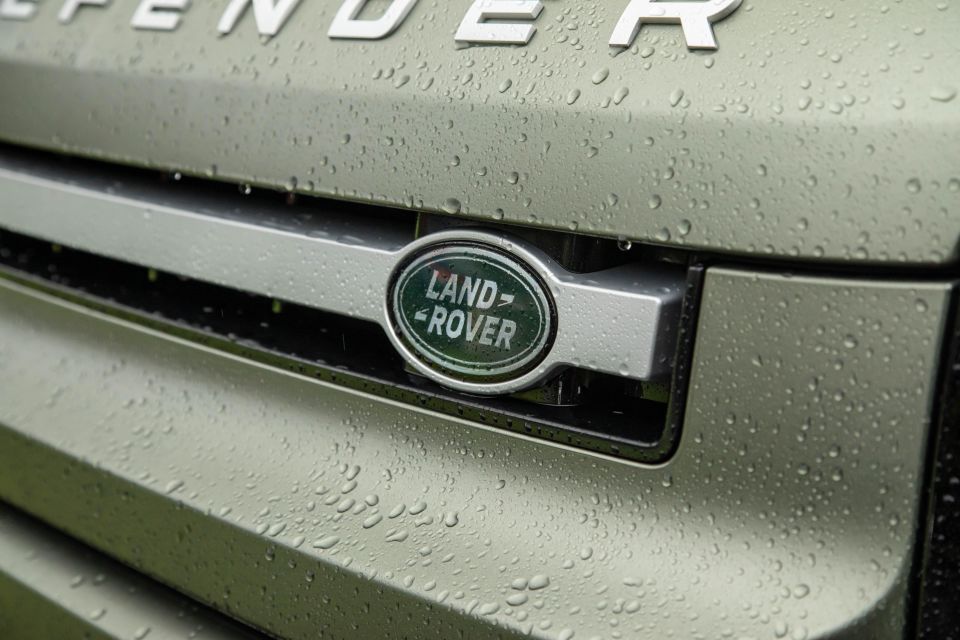
Through that plan, servicing is $530 a year or every 20,400km. Compare that to a Toyota LandCruiser 300 (servicing every six months/10,000km, at $400 per service – or $800 a year) and this looks like a comparative ownership daydream.
You also get five years of roadside assistance included – one would hope you won’t need it, but the JD Power data out of the US suggests Land Rover’s quality concerns are still prevalent. And honestly, I know a few people who were keen to get a Defender, but decided against it due to that concern.
Look, I’ve never broken down in a current-gen Defender, but the perception of the brand is tarnished when it comes to reliability.
Part of the reason people buy Toyotas in droves in Australia is that the brand has a huge dealer network and servicing footprint, and if (and that’s a big fat IF) you break down in the middle of nowhere, you’re likely not that far from someone that can fix your ‘Cruiser.
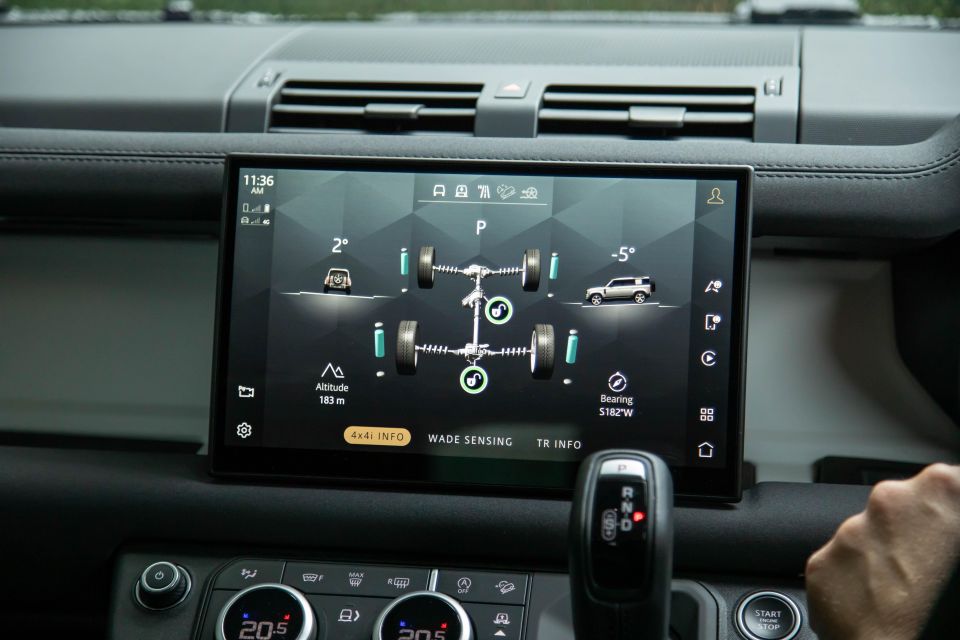
In a Defender? That’s going to be somewhat of a bigger issue, free roadside assist or not.
In terms of fuel costs, the official combined cycle figure for the D300 powertrain is 7.9 litres per 100 kilometres, but you deserve an award if you get anywhere close to that.
In my week of driving, which was strictly on-road, mainly highway and suburban testing, I saw a real-world figure of 11.7L/100km. The fuel tank is rated to hold 89 litres.
It is a terrific family SUV for those who plan to do some adventuring – be that in the urban jungle, or the actual jungle.
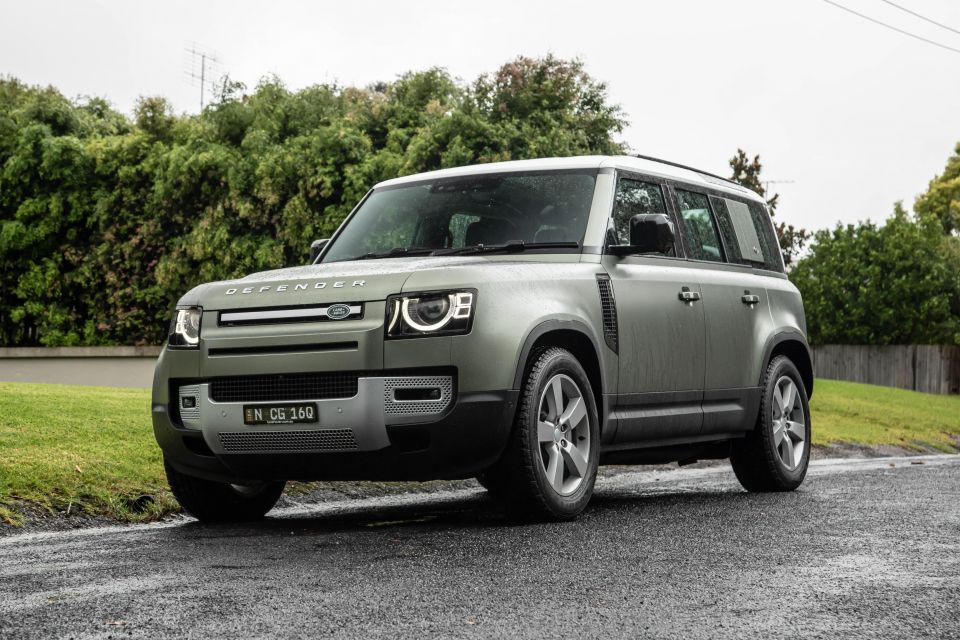
I’d have one in a heartbeat… but leased rather than an outright purchase, given the ongoing question marks over JLR’s product reliability.
Click the images for the full gallery
Where expert car reviews meet expert car buying – CarExpert gives you trusted advice, personalised service and real savings on your next new car.
Matt has more than a decade of experience in automotive journalism, and loves exploring the pros and cons of new cars, delving into deep-dive industry stories, and going for a drive just for the fun of it.


Andrew Maclean
1 Month Ago


Josh Nevett
30 Days Ago


Matt Campbell
23 Days Ago
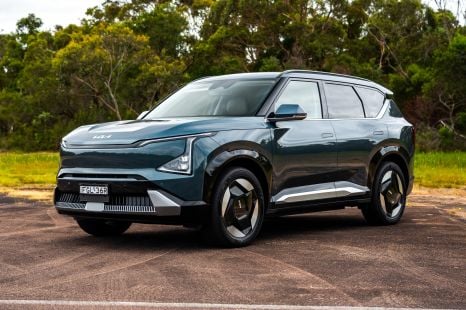

James Wong
16 Days Ago


CarExpert.com.au
10 Days Ago
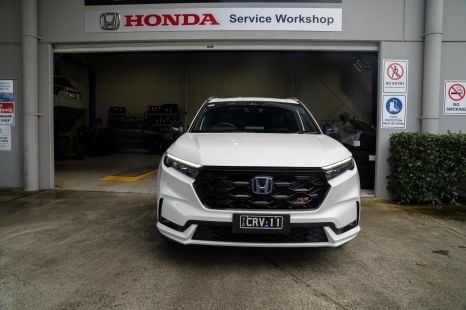

CarExpert.com.au
8 Days Ago